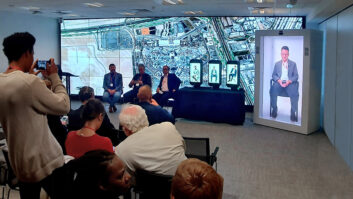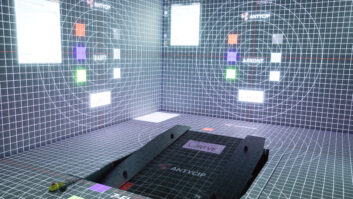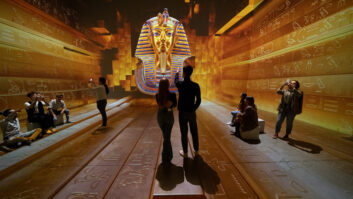Gesture-recognition systems let a person control technology with natural body gestures instead of using a remote, mouse or other device. Optical technology provider JDSU is working with PrimeSense to spread the word about gesture-recognition systems that have a wide range of applications in home entertainment and computing.
PrimeSense, a leading technology provider that incorporates JDSU optical technology into its gesture-recognition platform, has teamed up with JDSU for the next segment of ‘JDSU from a Different View’, a campaign designed to showcase the far-reaching impact of the company’s innovative technology. The latest segment on the relevant JDSU website (first link below) explains gesture-recognition technology and its potential impact on consumers and businesses.
JDSU is supplying key enabling optics – specifically, illumination source and optical filter technology – required for gesture-recognition platforms to capture and process data. Integrated into platforms such as a 3D sensor or set-top box, the information is mapped into a 3D image and incorporated into the system so that a person can easily manipulate an application. Examples include a gamer’s movements being tracked and translated within a video game, or a person in a living room using a hand gesture in front of a TV to pull up a movie or a website.
PrimeSense designs gesture-recognition platforms and provides them to major companies for their own solutions. “Gesture recognition requires that technology adapt more naturally to a person’s gestures, instead of making a person adapt to technology by learning a special skill set,” said David Dahan, COO of PrimeSense.
“Gesture recognition is revolutionary because it means that people no longer need to be physically linked to a device to control technology,” said Alan Lowe (pictured), president of communications and commercial optical products at JDSU. “JDSU is excited to be part of an emerging technology trend that will provide a whole new freedom to the way that people communicate and interact with their electronic environment.”
Speaking to IE Residential, Lowe said that the “emerging market” of gesture recognition provides JSDU with “another opportunity to expand the use of its optical technology beyond the telecommunications and industrial markets for new applications in the consumer market with the associated high volumes. The first examples are in gaming, [while] it is also moving into the living room, allowing people to control their electronic environment, starting via a 3D sensor or set-top box on a TV, with simple gestures. Future applications will be in computing [and] it will also be applied to portable devices such as smart phones.”







